Amazon SEO: Preparing for Amazon Listing Optimization

In the first article of our Amazon Search Engine Optimization series, we discussed how Amazon’s A9 search algorithm works and understanding the factors that influence organic ranking. In this article, we are going to discuss some of the steps needed to be taken before you can optimize your listing for search.
Before you start optimizing your product listings it’s important to understand how customers search for your product, how competitors position their products and analyzing reviews for pain points or benefits from actual customers.
There are a lot of software solutions that can save you some serious time during your research phase. At BellaVix we highly recommend the Helium 10 product suite as it provides the most bang for your buck. With that being said, this process is broken down for a manual process using free tools.

Conducting Keyword Research for Your Amazon Listings
Getting started, it’s important to get the context of how customers search for your products. Keyword research is the easiest way to get started. You are going to want to get an idea of colors, sizes, features, or themes someone searches for so you can best position your product offering to be the most relevant for these searches. The lowest hanging fruit is to use Amazon’s search bar to get an idea of common searches based on recommendations.
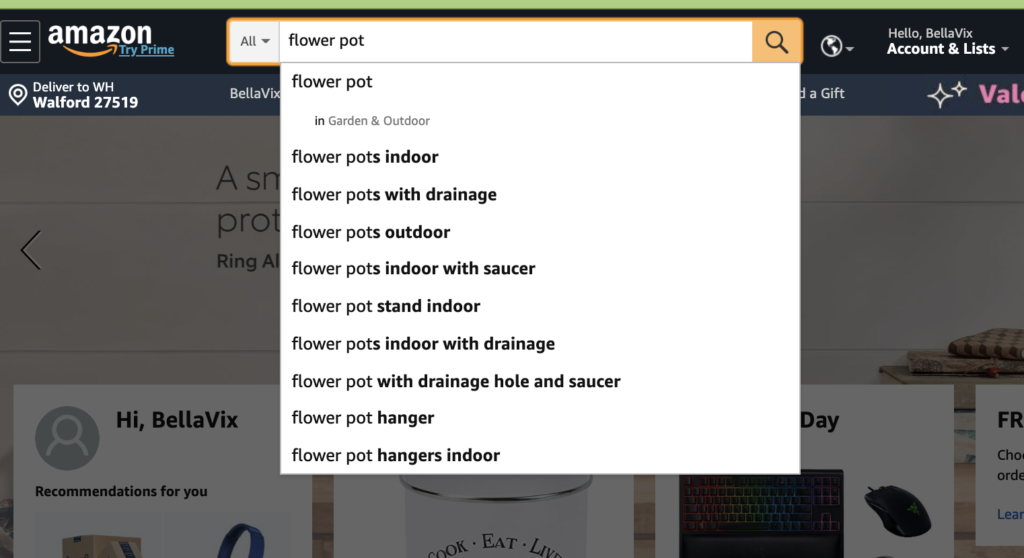
If I’m selling flower pots I can get an idea that customers who shop for flower pots look for
- Indoor
- Outdoor
- With Drainage
- With Saucer
- Hangars
These are all themes to consider when doing research, be sure that whatever you decide to incorporate into your listing is relevant to what your product actually is. Also, you can’t be everything to everyone.
Next, you can try free software like Sonar by Sellics which provides a list of keywords and search volume information. You can search for keywords, Synonyms, ASINs, and translations.
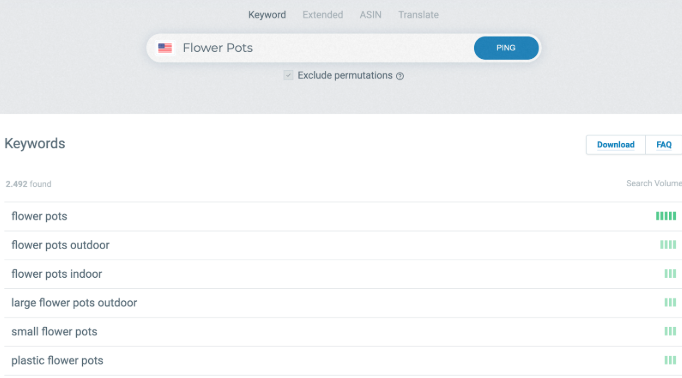
I really like to use the Extended tool to get an idea of other root keyword terms I can search to get an idea of other keyword variations I can use for root keywords. If a particular keyword is super competitive, going after synonyms can be a great opportunity to go after high-volume keywords with lower competition.
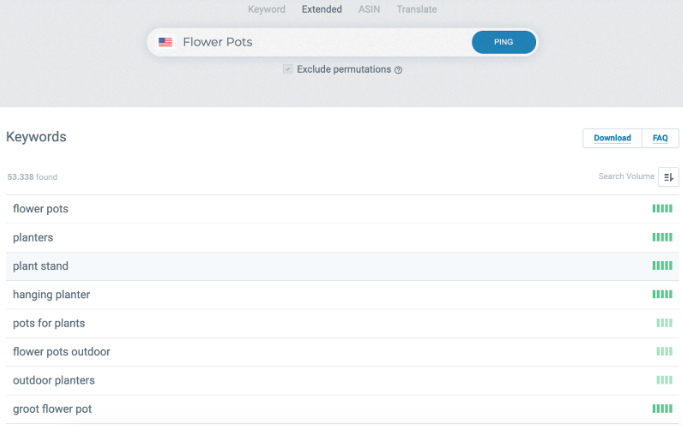
Analyzing the Competition
The next step is to get an idea of how your competitors are positioning their products, what features they are calling out, product price points and variations as well as images and enhanced brand content. You can get an idea of who is taking up most of the market for particular search terms. Keep in mind, Amazon’s mission is to be the most customer-centric platform on Earth. This means that the number one goal for every search is to lead to a sale, therefore every listing that shows up on the first page has shown strong conversion rates and good sales. Take note of the number of reviews, quality of review, and number of listings competing.
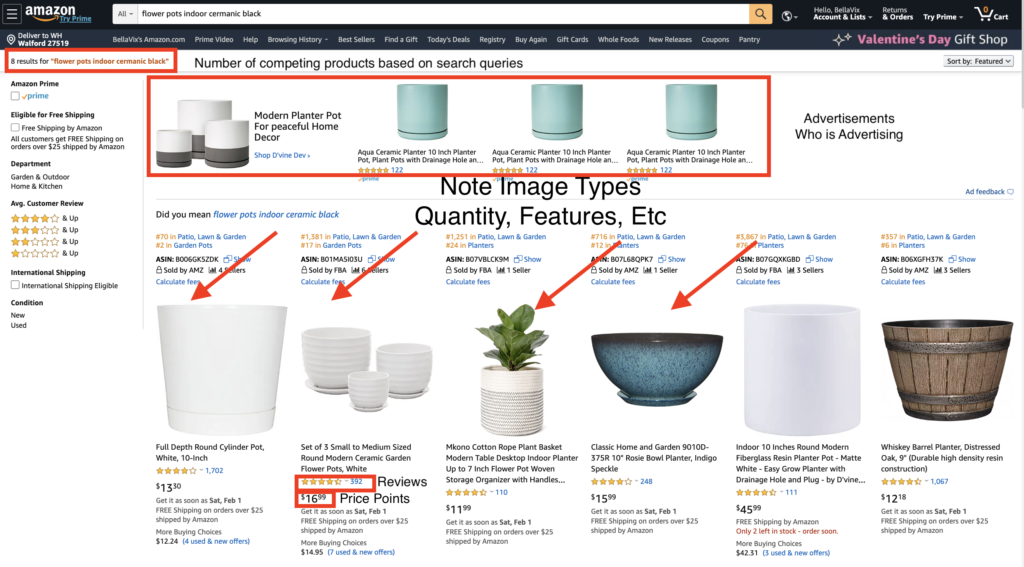
Lastly, pay attention to the languages used in the title for each of the top listings. Be sure to note how long the titles are and the features/benefits that are being highlighted in the title. The title is going to have strong text match relevance, therefore any of the keywords from your research being matched in the title are keywords your competitors are deeming most important to rank for.
Mining Reviews for customer insights

This customer did not have a good customer experience. The quality of the product was poor, imperfections were noted and images were shared. Also, 33 people found this review useful. Keep in mind customers check reviews on Amazon.
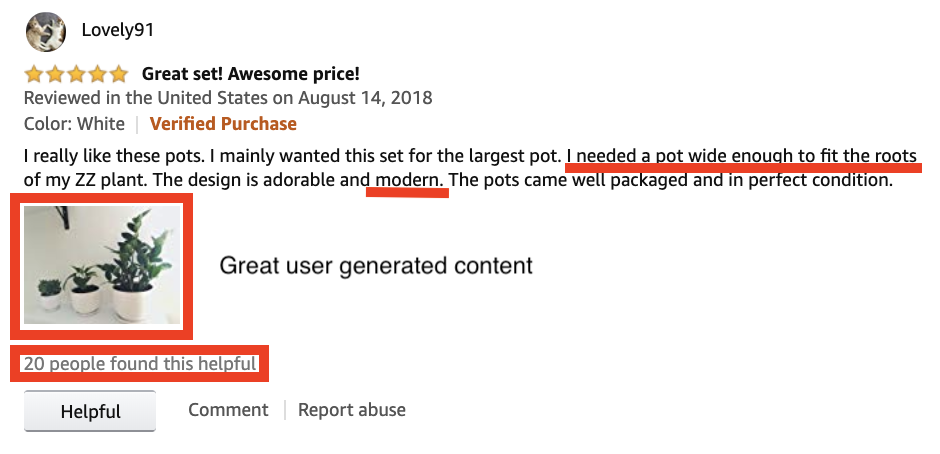
This customer review is useful as well. A large pot that will fit the roots for a specific plant type as well as using the term modern to describe it. A great adjective to maybe work into your title or bullets.
Analyzing reviews on competitor products is a great way to gain insights on how customers are using the product, how they describe the product, and the features they consider the most valuable. Also, on the other side understanding what customers find to be quality issues with existing products could be an opportunity to position yourself as the better alternative.
Wapping up, it’s important to do a little research on your products before starting the listing optimization process. This will give you a chance to better educate yourself on your customers and the marketplace. Conducting proper research before optimizing your listing will save you a ton of time and help you create a better listing that will rank better and quicker on search.
While the goal is to run a successful Amazon business, the larger your inventory gets, the harder it becomes to monitor and reach on time for every issue it might arise. We at Bellavix are dedicated to helping you monitor your account, address any issues, solve any problems and make sure you’re growing in sales and ranking. We have the experience and knowledge to make your account reach that next step.
If you have additional questions or want us to help you on your Amazon journey, don’t hesitate to contact the BellaVix Team.
Keep up with the latest Amazon and Walmart news updates and subscribe to our BellaVix newsletter 👇👇👇
